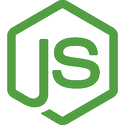Play.js Updated to CodeSandbox
Wednesday, May 4th, 2022
I was doing a little Node/JS coding on play.js on my iPad Pro this week, and ran into a few issues that I wrote to the developers about. They weren't all that big a deal, save one:
- Logging is iffy - using Node/Express, their default is the debug logging package, and yet you can't see any of the log messages in the console in the app.
- Running nodemon doesn't reload on changes - it would be nice to have a way to auto-reload changes in the files - specifically because the editor is saving them.
- Exceptions aren't logged - if there's an uncaught exception, it's not logged/printed in the console at all. Just silence.
And it's really the last one that's the kicker... no way to see if there has been any exceptions... that's something that would make it very hard to find errors in the code.
They wrote back that there would be updates that were coming soon that would fix most of these, and that I should sign up for the CodeSandbox Beta program and look for the updates. Well... this morning, I saw that they had an update, and changed the name of the app on iPadOS to CodeSandbox. So I fired it up to see how things had changed.
There were lots of changes, but the key problems I was having haven't changed, and they have really moved it away from what I liked about it, and towards another style, with different goals. It's OK... it's their app, but it's not the direction I was hoping they were going.
So... it looks like I'll have to wait a little longer to see what comes up as a development platform for the iPad...




